Despite the name, the Behold II has little in common with Samsung's original Behold. T-Mobile likes to re-use names to a fault, and while the original Behold was a TouchWiz feature phone, the Behold II is an Android smartphone. The similarity lies in the TouchWiz UI, which Samsung has thoroughly bolted onto Android 1.5. Both share a good 5 megapixel camera and a touch screen, but beyond that, they have little in common. While the Behold II shares a similar, though larger, form factor with the MyTouch 3G and the same 528MHz CPU, the similarity ends there since the MyTouch runs stock Android while the Samsung's is much modified by TouchWiz.
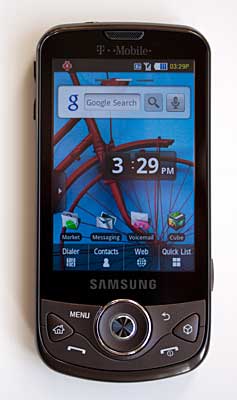
The Behold II is a large phone, though slim since it lacks a slider keyboard. It fits fine in roomy pockets but isn't compatible with tight jeans. It's pleasant looking though not sexy or chic. The front face features a faux brushed metal texture over the control area and this helps prevent finger slips. The round d-pad doesn't captivate us the way HTC's trackball does on their Android phones. It's bit hard to press the outer directional rim though the center action button works well. As with the Omnia II on Verizon, we have to wonder why Samsung devoted a precious front button to their cube launcher which is more eye candy than substance. But we give back points for the large and easy to operate call send and end buttons and the dedicated camera button. The back is fingerprint-loving black plastic with a nice looking world map in bronze (much more recognizable than Verizon's attempt at a world map on their version of the HTC Touch Pro2).
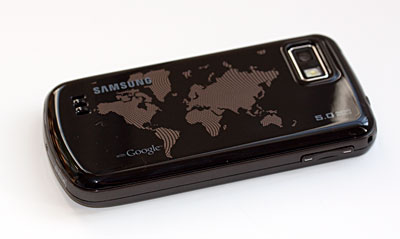
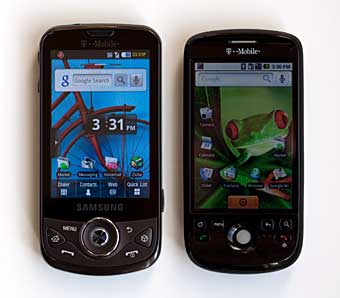
Phone and Internet
The Behold II is a quad band GSM phone with EDGE and 3G HSDPA On T-Mobile's US 1700 and 2100MHz bands. Call quality is good and volume is adequate for all but very noisy places, but 3G reception is a little below average among T-Mobile phones. The phone supports Bluetooth handsfree devices and headsets as well as A2DP stereo Bluetooth headsets and headphones.
The Android browser is very good, as always. Like the iPhone and Palm's webOS phones, Google's web browser is webkit-based, and that means it can render desktop sites with good fidelity (minus Flash). Being a Google phone, it sync perfectly with Google services including gmail with contacts and Google Calendar. The phone also works with POP3 and IMAP email accounts but it can't sync to MS Exchange.
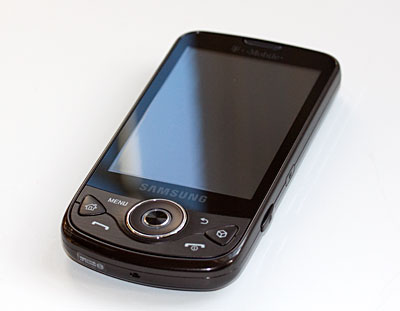
Video Review
Here's our 13 minute video review of the Samsung Behold II. It covers the design, web browser, GPS and it takes a deep look at Samsung's TouchWiz user interface enhancements.
Performance and TouchWiz
The Behold II's 528MHz Qualcomm CPU has become an old standby on Android and Windows Mobile phones. It's not going to impress anyone but it's up to the task of handling stock Android and Windows Mobile software. But TouchWiz proves to put too much of a burden on the CPU and our usual zippy Android experience lags here and there. The phone isn't as responsive as the MyTouch 3G running standard Android, nor is it as fast as the HTC Hero on Sprint. It's not dog slow, but it pauses and balks here and there; something we don't often see on Android. The phone has 320 megs of RAM which is quite a lot for any smartphone, including Android (256 megs is more the norm with the Hero having 288 megs to keep HTC's Sense UI moving smoothly). There are approximately 200 megs of free storage space where you'll want to install applications since Android doesn't yet support installing apps to a microSD card. T-Mobile and Samsung include a 2 gig microSD card in the box so you can store photos, videos, music and more.
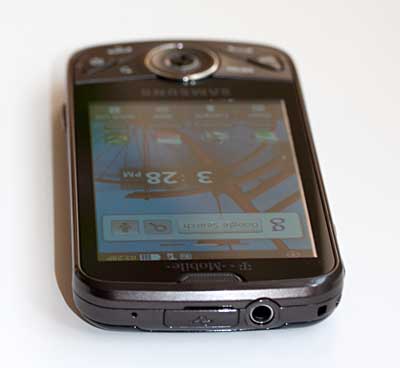
TouchWiz feels a bit over the top here: Android is a fresh new OS and it doesn't need that much help in the user interface department. Perhaps it's meant to ease TouchWiz users migrating from the Samsung Behold and Samsung Memoir. That said, if it weren't for the slowdowns and unwarranted skinning of Android apps, we'd complain less. It's not hard to use TouchWiz on the Behold II, but it's actually easier to use a standard Android phone since TouchWiz creates confusing duplications, and Android already has very capable downloadable widgets so the TouchWiz widgets don't add much.
Camera and GPS
Thumbs up for both the very good 5 megapixel camera and the GPS that works with Google Maps and TeleNav. Google Maps is free and is fantastic for finding POIs, while TeleNav offers good turn-by turn directions. The GPS got solid fixes even in urban locations and TeleNav's directions were cogent and clear.
The 5 megapixel camera has an autofocus lens and an LED flash. The camera took even better shots than the already good Samsung Behold, and video is among the best for US phones.
Conclusion
We love Android and we adore Samsung's vibrant AMOLED displays. But we could do with a little less TouchWiz on top of Android: it slows down the phone and it creates confusing redundant functionality. But if you're a Samsung feature phone user upgrading to your first smartphone, you just might appreciate the familiarity of TouchWiz. The phone is solid, well made and has one of the better cameras on the US phone market. With WiFi, a GPS that works with both Google Maps and TeleNav and Bluetooth with A2DP stereo, the Behold II has its merits.
0 Response to "Behold II"
Post a Comment